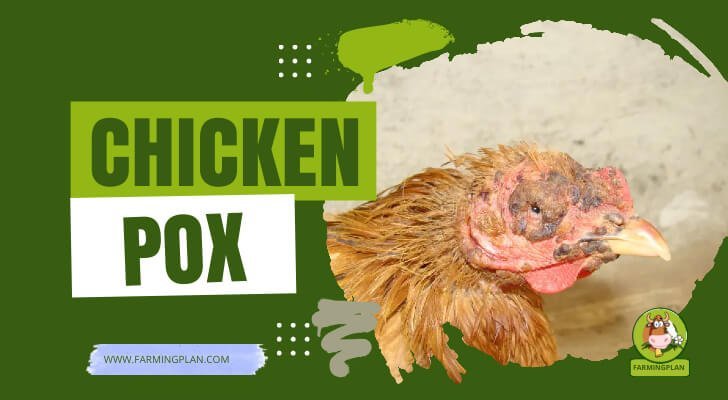Chickenpox is a highly contagious viral infection. Nowadays Chickenpox is not danger disease for humans. Chickenpox is more severe in adults. Adults susceptible to infection in the form of Chickenpox usually have more lesions and associated complications such as pneumonia. Chickenpox is a highly contagious disease caused by the varicella-zoster virus (VZV). Chickenpox causes an itchy, blister-like rash.
The rash first appears on the chest, back, and face, and then spreads over the entire body. Chickenpox can cause between 250 and 500 blisters that are very itchy. Chickenpox is spread through droplets from coughing or sneezing in close proximity to another person’s nose or mouth. Keep reading for more information about chickenpox symptoms and treatment!

Characteristics of Chickenpox
The main characteristic of Chickenpox is a vesicular rash in the form of itchy spots and blisters. This disease is common among children, although it has a variant of adults, shingles, which is more serious and involves the subsequent reactivation of the virus. Chickenpox is contagious at any time of year, but it is more common in winter and spring.
Transmission of the virus occurs through small drops of vesicular fluid. The transmission also occurs by secretions from the respiratory tract. Especially when the patient coughs or sneezes. People can also get sick when touching objects that have touched people who have Chickenpox. Because it is a highly contagious disease, the patient must be isolated.
The probability of transmission among children attending the same school or among family members exceeds 90 percent. More than 95 percent of adults have antibodies against Chickenpox in their blood. This means that almost anyone comes into contact with the pathogen and sick person in the course of their life. Usually, once you have had Chickenpox, you are immune to it for life.
This means that a person can only get chickenpox once in their life. However, there are people who have been given chickenpox twice in their lifetime. Especially when the first infection occurred at a very early age or developed very weakly. You can also read Tapeworm Here
Symptoms
Generally, the patients do not present obvious symptoms before the outbreak occurs. The symptoms are fever, tiredness, headache, and lack of appetite. Symptoms begin between 10 and 21 days after infection. The most characteristic is the appearance of reddish and flat spots, which gradually become prominent until they become blisters or vesicles.
These cause a great itch, they break easily and form crusts that come off and disappear in about two weeks. The process extends until the sixth day of the disease. Each blister passes through a series of phases: macule, papule, vesicle, pustule, and scab. Each of the blisters will be in one phase regardless of which phase the rest is in. The spots appear throughout the body, especially in the trunk and scalp in successive shots.
On certain occasions, healthy people have other problems as a result of Chickenpox. For example, spots or rash can become infected. Healthy children can develop up to 500 skin lesions that sometimes leave a permanent mark. In severe cases, the spots extend through the extremities and face. In addition, sores in the mouth, eyelids, rectum, vagina, and respiratory tract may appear.
The severity of varicella infection is variable; Children may have the infection but do not have symptoms. In fact, its incidence in adults is approximately 5%, but if serious complications appear, 50% of the deaths occur in adults.
80-90% of people who live with patients and are susceptible will get chickenpox and, in addition, having greater exposure to the virus, they will develop a more serious picture. If a person has chickenpox, they can spread the virus about one to two days before the rash erupts. It will remain infectious until crusts form, usually five to six days after the onset of the disease.
Prevention & Treatment
The goal of the vaccine is to prevent the spread of the disease, its complications and subsequent reinfection in the form of herpes zoster.
- The vaccine consists of a single dose.
- The vaccine has no reactions important in children and adolescents.
- The side effects of the vaccine are mild, causing redness, pain, and swelling.
- It can also cause dizziness, tiredness, fever or nausea.
- The vaccine prevents disease in up to 80 percent of cases.
- The vaccine is administered to healthy children between 12 and 18 months of age.
- Young people after 13 years can be placed with two doses of the Chickenpox vaccine.
- The Varicella Vaccine If administered Along with other vaccines, such as measles, rubella, mumps, polio, hepatitis B or meningitis.
However the vaccine not it is convenient to administer to people with weak immune systems or pregnant women. Varicella requires antiviral and symptomatic therapy. Symptomatic therapy does with analgesics, antihistamines and creams or lotions that soothe itching. Its effect is palliative and transient.
Wet compresses or warm baths are also recommended to clean the wounds that occur when scratching the blisters and avoid possible infections. If a patient has a bacterial infection, antibiotics will be administered, and if there are serious complications antiviral drugs such as acyclovir or interferon-alpha are used. There is no specific treatment for Chickenpox and will usually be improved without any medication.
People can take the following simple steps to help reduce symptoms
- Drink plenty of fluids.
- Dress appropriately so you do not get too hot or cold.
- Use smooth cotton fabrics to reduce rash irritation.
- Keep your nails short to avoid scratching your skin.
To keep skin cool (use light clothing and wash or sponge on the skin with warm water to help relieve the itching). This will also help lower the high temperature. Adding between half and a cup of baking soda to a warm bath can calm the itching. Another alternative to combat this virus is an anti-varicella immunoglobulin, which contains antibodies to the disease, and people at high risk can use it.
Conclusion
People who get Chickenpox or complications from the disease are those with low defenses. Children or children under one-year-old and newborns whose mothers have had chickenpox before or during childbirth are the most vulnerable. Pregnant women who have not had chickenpox should take precautions not to get this disease.
When the disease is spread during the first few months of gestation or shortly before birth, the fetus may suffer from various disorders or even malformations. The vaccine should be placed when people are babies, in this way if children are affected by the disease, it will not attack them so strongly.
As A References: Wikipedia

